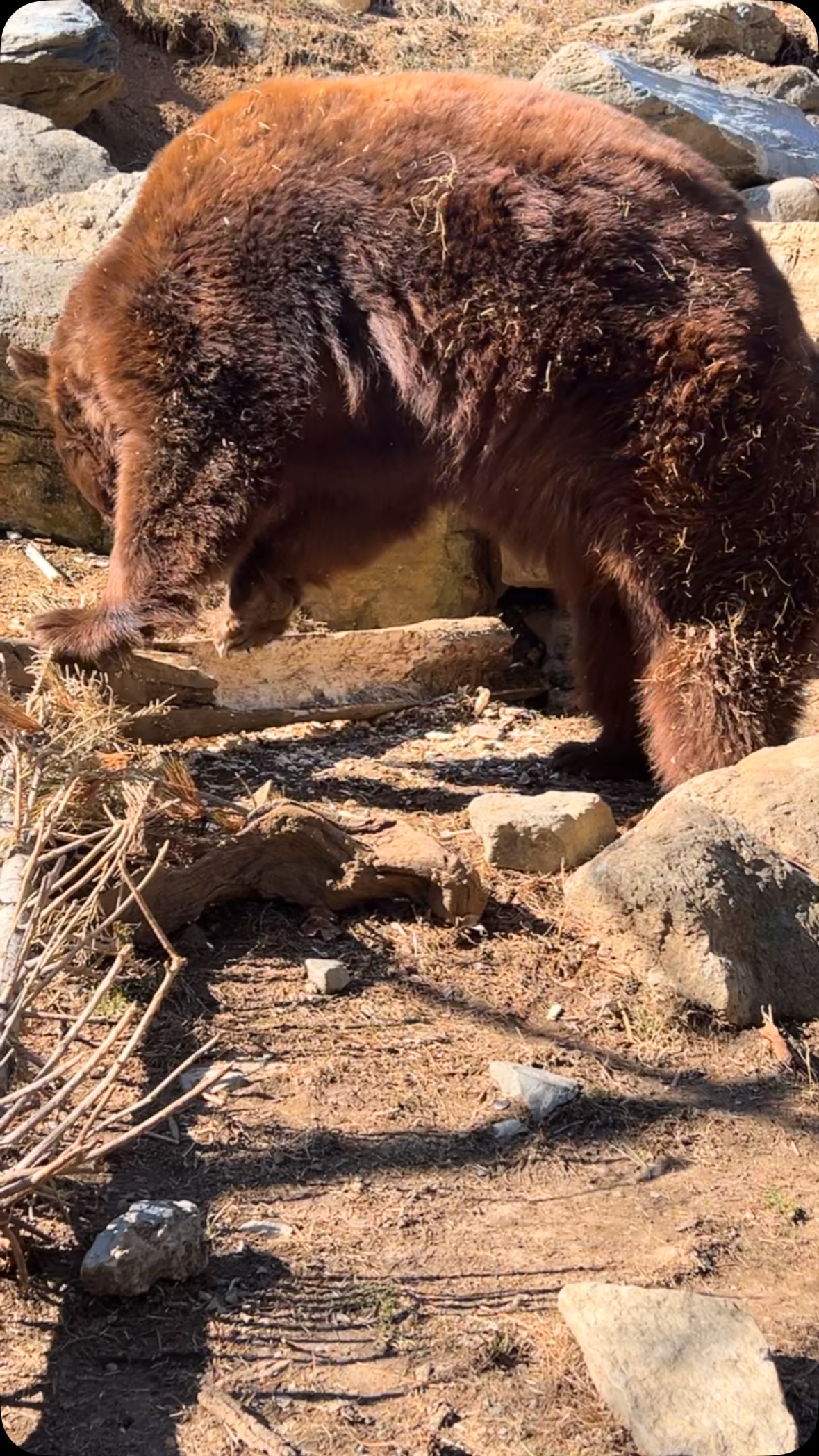- Importance of World Bear Day for conservation and education.
- Overview of the eight bear species, their habitats, and roles in ecosystems.
- ZooAmerica’s approach to bear management and public education.
- Practical guidelines for human-bear coexistence and safety.
- Contributions of bears to biodiversity and ecological health.
Today, we turn our attention to World Bear Day, a global opportunity to spotlight the enduring significance of bears in our world’s ecosystems and underscore the need for effective conservation measures. As much as bears inspire awe and curiosity, they equally face challenges due to human encroachment and habitat destruction. Thus, fostering awareness and promoting respect for these majestic mammals is more vital than ever.
There are eight bear species globally, each playing crucial roles in their respective ecosystems. The North American Black Bear, known for its adaptability, inhabits a range of environments from Canada to Mexico. Grizzly Bears possess a reputation as powerful omnivores and occupy regions in North America including parts of Alaska and the northwestern United States. Polar Bears, iconic symbols of the Arctic, depend heavily on sea ice as hunting grounds. The Asiatic Black Bear and the Sun Bear are forest dwellers of Asia, each contributing to seed dispersal and forest health. The Sloth Bear, native to India, thrives in grasslands and forests where it consumes termites and ants, aiding in pest control. Spectacled Bears, the only bear species found in South America, are crucial for Andean biodiversity. Finally, the Giant Panda, once critically endangered, has become a global symbol of conservation success.
ZooAmerica, nestled in the heart of Hershey, Pennsylvania, champions the cohabitation of humans and wildlife. Their focus on North American Black Bears offers a firsthand appreciation of these intelligent creatures. Murphy, one of their resident bears, demonstrates natural foraging behaviors, like using his nails to excavate logs in search of insects. This behavior reflects their exceptional olfactory abilities, allowing them to detect food beneath dense layers of wood. By observing Murphy, visitors gain insights into the black bear’s role in controlling insect populations and contributing to forest ecology.
To foster a harmonious coexistence between humans and wild bears, education remains crucial. It starts with simple yet effective practices. Never feeding or approaching bears is fundamental as it prevents bears from associating humans with food. Securing food, garbage, and recycling prevents them from foraging near human habitats, thereby decreasing potential confrontations. During active bear seasons, removing bird feeders is advisable. Pet food should always be stored indoors, and grills and smokers cleaned to avoid attracting hungry bears. Lastly, maintaining open communication within communities about bear activity can mitigate risks and enhance public awareness.
Bears, through their diverse dietary habits and substantial physical presence, significantly influence their environments. As apex predators and keystone species, they regulate prey populations and foster biodiversity. For example, the Grizzly Bear helps maintain fish populations, as their feeding patterns redistribute nutrients within ecosystems. Similarly, by consuming a wide array of fruits and vegetables, bears assist in seed dispersal, promoting plant diversity and forest regeneration.
World Bear Day is not merely a celebration of bear species; it is a commitment to conservation, research, and public collaboration. This initiative encourages us to protect these majestic creatures and their habitats through informed action and policy. As we deepen our understanding of bear biology and ecology, we can develop more effective conservation strategies and inspire future generations to advocate for the protection of wildlife.
The challenge lies in balancing human development with wildlife conservation. By promoting educational initiatives like those at ZooAmerica, we can cultivate a peaceful coexistence with bears and safeguard our shared ecosystems for future generations. Today, let us reaffirm our dedication to this important cause, recognizing the value of every bear species and the crucial roles they play in maintaining the natural world.
*****
Source Description
Today we celebrate World Bear Day! 🐻 A day to bring awareness to the eight species of bears around the world so that we can promote respect and coexistence with animals that contribute so much to our ecosystems!
ZooAmerica is home to two North American Black Bears. Murphy is showcasing some of his fantastic bear behaviors by using his nails to dig at a log. Bears do this to find tasty treats such as ants, grubs, wasps, bees and other insects! They can detect these creatures even when they’re hidden deep inside rotting wood thanks to their highly developed sense of smell.
We can better coexist with wild bears by being bear wise while enjoying nature!
👎 Never feed or approach bears
🚮 Secure food, garbage and recycling
🏠 Remove bird feeders when bears are active
🛑 Never leave pet food outdoors
🧽 Clean and store grills & smokers
🚨 Alert neighbors to bear activity
🎥: Alicia H., Zoo Supervisor


